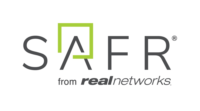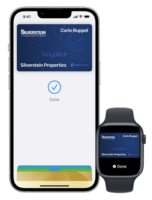Europe’s newest multipurpose arena, Nokia Arena, which opened in December in Tampere, Finland, includes state-of-the-art access management provided by Abloy Oy. Security and access control systems are integrated with arena staff shifts and logistics; mobile devices and wristbands are used as keys; and rapid emergency exit is central to the arena. The stadium, which is home to the Finnish ice hockey league team Tappara and will host the 2022 Men’s Ice Hockey World Championships, is expected to draw event crowds of up to 15,000 people.
Architect Daniel Libeskind designed the arena, built above the city’s main railway line. Its location in the city center and its around-the-clock hours highlight the importance of access management. For example, the arena requires separation between semi-public, open areas from premises accessible only to employees or hotel guests.
"Nokia Arena is a striking example of security trends, where access rights are becoming digital and door environments are touchless,” said Jari Perälä, vice president, domestic sales and marketing, Abloy Oy. “In this development, various human resource, space and access management systems, for example, are integrated. They share information to improve operational efficiency and security. There has been a lot of discussion about the API economy, i.e., utilizing data shared through application programming interfaces, in recent years."
Arena doors are opened with access rights on mobile devices and wristbands, as well as electromechanical keys. “We have introduced a wide range of keys,” said Jani Helenius, property and security manager at Nokia Arena. “Access permits can be sent to smart devices, in which case the door opens with the help of a mobile phone or smartwatch in the blink of an eye. This way, for example, an ice hockey team training in the rink does not have to worry about losing the keys or returning them to the right place when the access rights expire at the end of the game shift. When granting access, it is also possible to determine which premises can and cannot be accessed."
The locks are also integrated into the work shift system of the arena's restaurants. “For example, when a waiter arrives at the beginning of his or her shift, the access rights granted to the person immediately take effect in the necessary premises," said Mikael Ermala, Abloy's key account manager.
Directing an audience of 15,000 to safety in case of emergencies is essential for Nokia Arena. That's why the locks on the arena doors are integrated with the fire safety system. Smooth evacuation is also ensured by ABLOY push bars, which are on all doors and exit routes. Simulations during the construction phase have shown that 4,500 people can be guided away from the main floor of the arena in less than eight minutes, and the entire arena can be emptied in about 15 to 20 minutes.
"Nokia Arena is an important project for us, where together we have been able to develop completely new, technology-enabled ways of using locking solutions,” said Perala. “We have good experiences securing similar large arenas, such as the Helsinki Olympic Stadium in Finland and the Warsaw National Stadium in Poland."



